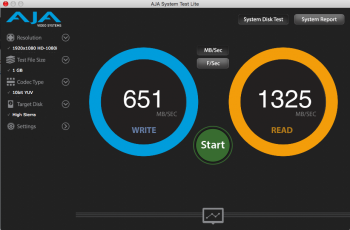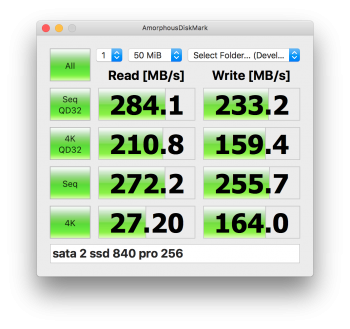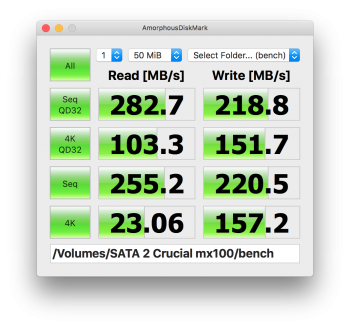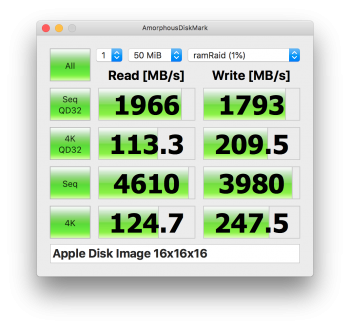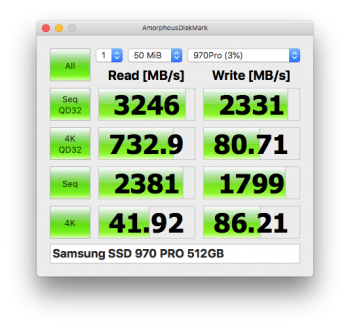My trusty Mac Pro 3,1 is ticking along well after all these years and does what I need.
But just as a matter of idle curiosity – what would be the fastest drive configuration on such an old machine?
Over time I have installed a few SSDs and tried them both on the back plane and on a Sonnet Tempo Pro (the previous "non plus" version), both as RAID 0 and un-RAID'ed.
When I last checked I didn't notice much difference if I put my Intel 520s as a RAID 0 boot/apps drive on the Tempo or used only one of them for boot/apps.
I haven't really followed SSD developments closely since I bought the Intel 520s, but I gather there are also other formats now that fit in the PCI-E ports – are such drives even compatible with a 3,1 and its PCI-E 2.0?
And would they run faster than SSDs, even if RAID 0 on the Tempo? Are there other technologies available today?
Am I right in believing that if I upgrade my SSDs to, say, Samsung 850/860 the only difference to the Intel 520s would be in the random read and writes?
I realise this is in enthousiast territory rather than real-world use territory, but I'm curious.
Thanks in advance
Philip
But just as a matter of idle curiosity – what would be the fastest drive configuration on such an old machine?
Over time I have installed a few SSDs and tried them both on the back plane and on a Sonnet Tempo Pro (the previous "non plus" version), both as RAID 0 and un-RAID'ed.
When I last checked I didn't notice much difference if I put my Intel 520s as a RAID 0 boot/apps drive on the Tempo or used only one of them for boot/apps.
I haven't really followed SSD developments closely since I bought the Intel 520s, but I gather there are also other formats now that fit in the PCI-E ports – are such drives even compatible with a 3,1 and its PCI-E 2.0?
And would they run faster than SSDs, even if RAID 0 on the Tempo? Are there other technologies available today?
Am I right in believing that if I upgrade my SSDs to, say, Samsung 850/860 the only difference to the Intel 520s would be in the random read and writes?
I realise this is in enthousiast territory rather than real-world use territory, but I'm curious.
Thanks in advance
Philip


